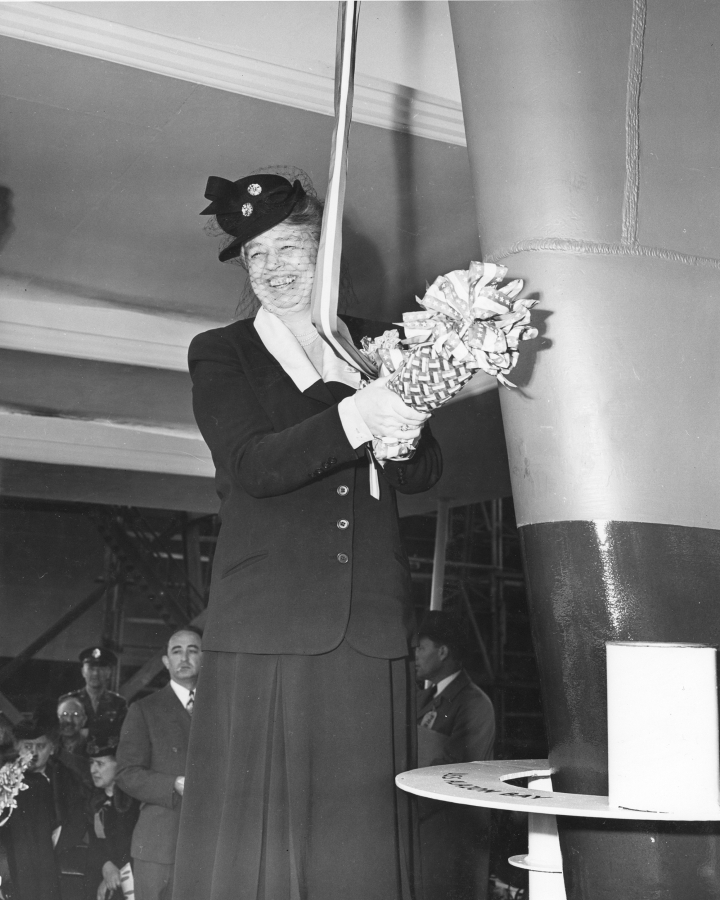In 1942, she was a hollow hull bearing the number 1092. Of the 137 ships constructed and launched there, she was first. Six months later, 1092 emerged as the first “baby flattop” built at Vancouver’s Kaiser Shipyard. Unfortunately, she contained a flaw.
Names didn’t seem to stick to hull 1092. Her name slipped from Ameer to Casablanca and finally to Alazon Bay. As the HMS Ameer, she was promised to Britain. When the British Navy jilted her, the U.S. Navy engaged her.
On April 5, 1943, 75,000 people crowded into Vancouver, then a town of 18,000 residents. The assembly converged on the city’s shipyard at what’s now Columbia Business Park. Although it was a Monday, many came dressed in their Sunday finest to watch First Lady Eleanor Roosevelt conk the ship’s bow with a champagne bottle and christen the USS Casablanca.
The Casablanca slid down her ramp into the Columbia River and sailed to Portland. While docked there three months, the Navy commissioned and renamed her Alazon Bay before sending her on a shakedown cruise July 2. Vancouver native, Gene Ritter, remembers his uncle, Harvey Green, was an oiler on that cruise and is listed as a crew member in the ship’s “Procedure for Trials.”



